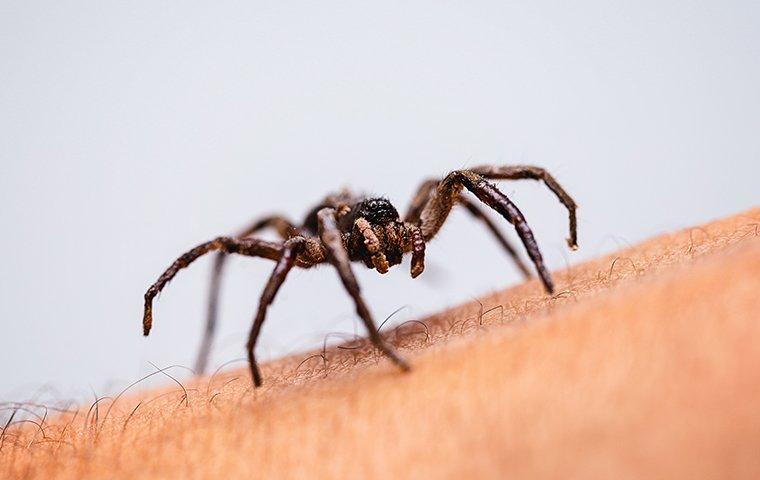

House Spiders
What Are House Spiders?
One of the most common species of spiders living indoors with people is the house spider. House spiders have an elongated abdomen and are a yellowish-brown color. On their body and legs are darker stripes that meet at an angle. Like all spiders, house spiders have two body segments, eight legs, and do not have antennae or wings. House spiders are a type of web-building spider; they use their webs to rest and to capture their prey.
House Spider Frequently Asked Questions (FAQs)

Are House Spiders Dangerous?
A type of predator, house spiders are dangerous for their insect prey, but they are not a danger to people. The venom they possess is only strong enough to paralyze insects but is not strong enough to cause problems in people. Spiders prefer to stay out of sight and only bite if they are feeling trapped or otherwise in danger.
House spiders are annoying pests to deal with, and the constant building and abandoning of nests throughout your home can be frustrating. Multiplying quickly, just a couple of house spiders can turn into many house spiders fast.
Why Do I Have a House Spider Problem?
House spiders are in your Dallas home because either they followed their prey inside or want a safe place to lay their eggs. House spiders, before moving into your home, were living close by in garden areas, shrubs, bushes, and in piles of organic debris.
As spiders follow their prey, they move indoors through spaces they find around windows and doors, through exterior walls, in holes in the roofline or any other entry point they discover.
Where Will I Find House Spiders?
House spiders are great climbers and place their webs in the corners of walls, windows, and doorways. They prefer to live in areas inside a home with higher humidity levels, and you’ll often find them in the corners of bathrooms, laundry rooms, kitchens, and basements.
How Do I Get Rid of House Spiders?
Locally-owned and family-operated, All-Safe Pest & Termite is the best choice to get rid of house spiders from your home or business. We offer fast response times and peace of mind knowing that your pest problems will be solved, and they won’t return. Our experienced professionals provide top-quality pest control services using the latest and most effective products to eliminate house spiders from Dallas properties. Discover why your neighbors choose All-Safe Pest & Termite for their pest control needs. Give us a call today!
How Can I Prevent House Spiders in the Future?
Prevent problems with house spiders by partnering with All-Safe Pest & Termite and by implementing the following prevention tips:
- Remove spider webs from the corners of your home as soon as you see them. Believe it or not, this will annoy the spiders and cause them to want to move on to a new location.
- If you see house spiders in your home, use a vacuum to remove them.
- Seal up cracks and crevices found in your foundation, exterior walls, and spaces around air conditioners to keep spiders outside of your house.
- Replace white outdoor lightbulbs with yellow or LED light bulbs that are less attractive to the insects that spiders love to eat.
- Maintain your yard. Keep grass short. Prevent shrubbery from overgrowing and keep it cut back from your home’s exterior walls.
- Make sure storage areas in your home are neat, organized, and free of clutter.
- Use plastic containers with locking lids to store things in your home. Cardboard boxes are easily accessible to spiders and make great hiding spots.
- Keep humidity levels in your home low by using dehumidifiers and air conditioners.

Get Your Free Estimate
$50 Off Your Initial Service When You Book Online!

How We Can Help You Our Services






